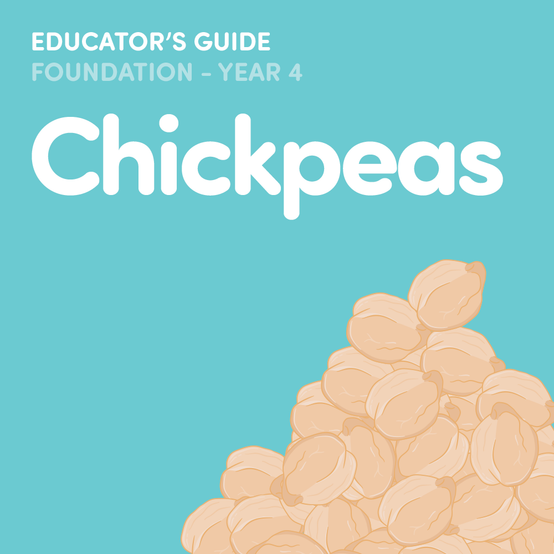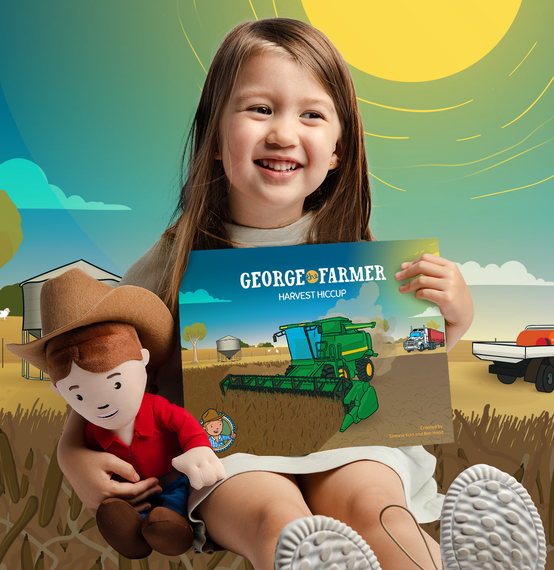** Please note ** This is a downloadable resource. Upon submitting your order, you will receive an email from orders@georgethefarmer.com.au which will contain the download link for the resource/s. Thank you!
-----
This George the Farmer Educational Resource aims to raise awareness about many of the things the chickpea industry does to farm, grow, produce, process and provide us with healthy, non-fatty protein-rich food!
So what are chickpeas? Chickpeas are a type of pulse. Pulses are a food group of dried edible seeds from the legume family. They include faba beans, lupins, lentils, chickpeas, and field peas and are a critical part of the general food basket.
Chickpeas are food plants whose seeds are enclosed in pods. They fix nitrogen into the soil as they grow, improving the condition of the soil for future uses.
Pulses grown by Australian farmers include lentils, chickpeas, peas, faba beans, mung beans and adzuki beans. 90% of Australian pulses are exported overseas with the Indian Subcontinent, North Africa, the Middle East, and Asia the largest importers/buyers of Australia’s various pulses. Pulses are grown in all states of Australia (excluding the territories).
This free curriculum-aligned educators guide for Foundation - Year 4 levels focuses on Science, Technology, Engineering, Arts, Maths and Sustainability (STEAM) subjects.
The pages in this resource are intended as starting points for a cross-curricular approach to learning, based on the George the Farmer YouTube video “Chickpeas” and accompanying Virtual Reality (VR) video on YouTube or through the FarmVR app.
It is also suggested that students read ‘George the Farmer Harvest Hiccup’ which is about broad beans or stream George’s ‘Pulse Party’ song. George’s music can be found on Spotify or Apple Music.
The activities seek to complement and extend the enjoyment students will experience from seeing the video and VR, whilst at the same time meeting some of the requirements of curriculum outcomes.
The activities in this resource can be printed out for students, or alternatively, display the activity page from the PDF on your interactive white board or import an activity page into your online teaching and learning environment such as Google Slides and have the students use their existing workbooks to complete the task.
This is a FREE curriculum-aligned guide. Enter your details to download the PDF. Payment details are not required.
---
This curriculum-linked learning resource was produced by George the Farmer Pty Ltd for Primary Producers SA (PPSA).
This project is supported by the Department of Agriculture, Water and the Environment, through funding from the Australian Government's Educating Kids about Agriculture initiative.




